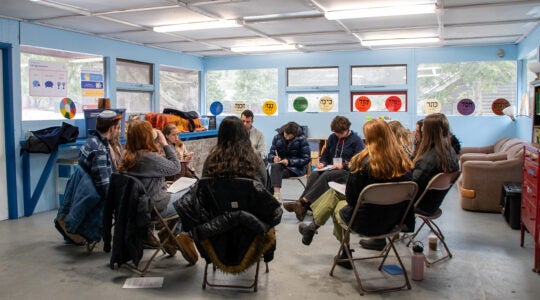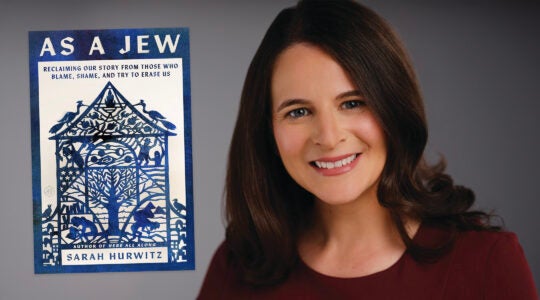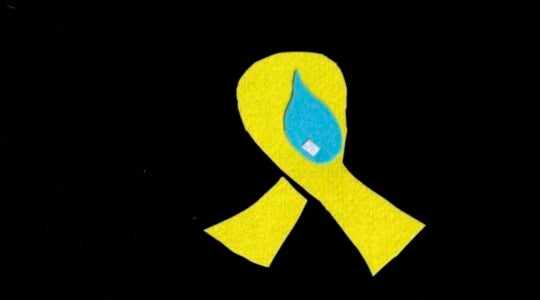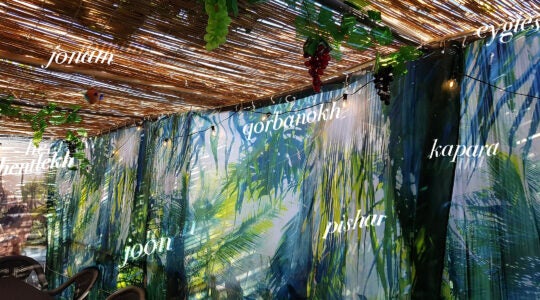As a rabbi with a love of fashion, Loehmann’s — the iconic off-price retailer — has always held a special place in my heart. That’s why my Jewish self was giddy upon hearing of its pop-up reopening in Deer Park, just five minutes from my hometown on Long Island.
After rearranging my schedule to be there on opening day, I shlepped out to Long Island on a Friday (never a great idea!) and made it there within an hour of the store’s grand reopening. On a breezy summer morning, the step-and-repeat was out, the fluorescent lights were blazing, and salespeople were scurrying to get those 50%-off signs just right.
I placed my black handbag on the floor to peruse a rack of animal-print jackets, when an older woman gave me the unmistakable Bubbe stare and muttered, “You shouldn’t do that.” I was home.
Loehmann’s, which closed in 2014, was never just about bargains. It was about the chorus of unsolicited advice, with the communal dressing room as its sanctuary. Under the merciless glare of fluorescent lights, grandmothers, mothers, and strangers alike weighed in on your outfit options — whether you asked or not. You could always count on someone’s Bubbe in the corner telling you that skirt was too short, that shade was too harsh, and that you could do better.
From a young age, shopping there with my mother and grandmothers (Bubbe and Grandma), I can still recall the smell of that fitting room: part new clothes, part mildew, and part Bubbe’s perfume. It was also an introduction to aging. No sag was left unseen. Long before Facebook fed me wrinkle-serum ads, Loehmann’s gave me a front-row seat to the realities of gravity.
Many women found that pursuing Loehmann’s bargains and trying on designer outfits at a more reasonable price was the ideal American experience. It embodied the promise of the Goldene Medina — the Yiddish phrase describing a golden land where the streets were paved with gold (this was, of course, before the age of “quiet luxury”).
For me, Loehmann’s wasn’t only cultural — it was spiritual. One of my last major purchases at Loehmann’s was a kittel — the traditional white cloak worn on the High Holidays. The racks didn’t contain an official kittel but that white Romeo & Juliet couture jacket was practically begging to be one. (I even went back to buy a second one just in case something happened at the dry cleaner!). Each year I stand on the bimah leading prayers, literally clothed in Loehmann’s. In that dressing room, faith and fashion became stitched together.
Last week, when I heard about the reopening, I couldn’t resist asking on Instagram whether it should, in fact, count as a Jewish holiday. The comments section exploded and thousands of memories poured in. Women recalled shopping with their mothers, their grandmothers, their best bargains, and the outfits that launched their careers.
My playful question quickly became something bigger: a collective discourse on Loehmann’s. The whole thing felt quite Talmudic. Just as the rabbis once asked, “Mai Hanukkah? What is Hanukkah?” at the start of a sugya (Talmudic passage) — and answered not with a simple definition but with layers of debate and memory — so too did my post spark ritual and nostalgic conversation.
Many comments were joyful, even liturgical. One person declared, “This is a blow-the-shofar kind of day,” while another called it “holy and sacred.” Others insisted it should absolutely count as a Jewish holiday — maybe even a national one.
But the dressing-room memories dominated. People swapped recollections of the “murky odor” and the treasures they unearthed inside, along with the unsolicited opinions that always came with them. Some admitted they were “still traumatized” by the fitting rooms, while others laughed about the secrets revealed there — like the mom who discovered her daughter’s belly ring under those fluorescent lights. One woman even confessed that she once got so stuck in a dress that the saleslady had to cut her out with scissors.
Still other stories were tender, even profound. A woman remembered every single bat mitzvah dress she bought at Loehmann’s. Another recounted dashing in with her toddler in a stroller, finding a $55 suit for a second interview, and landing the job that made her the first female lawyer in her firm after twenty-five years. Someone else shared that her last shopping trip with her mother, before she went into hospice, was to Loehmann’s — a memory she still treasures. Several described the line of dutiful fathers camped out at the store’s entrance, waiting with the other men while wives and daughters scoured the racks.
Loehmann’s, it turns out, was always more than bargains — it was a gathering ground for humor, unsolicited wisdom, identity, and cultural belonging.
I would be remiss not to report on my purchases. In truth, I walked out empty-handed — though I did linger over a pair of sparkly platform sneakers. Even at 50% off, however, justifying a $975 Back Room price tag would take nothing short of divine intervention.
Still, my return to Loehmann’s was a true Shehechiyanu moment, fluorescent lights and all. The communal dressing room — may its memory be a blessing — has not returned, but in its place stood drapey grey portable stalls bunched together, hopefully ready to spark a new chorus of criticism, advice and communal camaraderie.
JTA has documented Jewish history in real-time for over a century. Keep our journalism strong by joining us in supporting independent, award-winning reporting.






